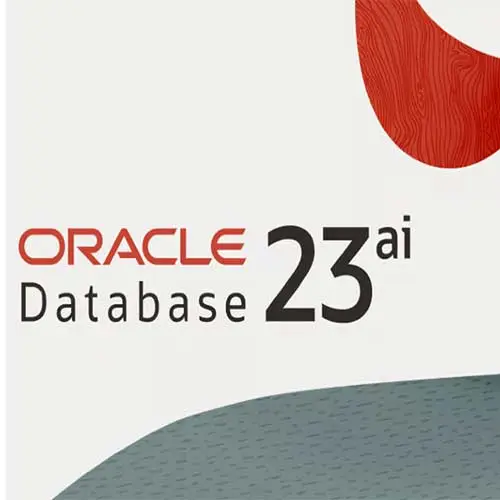Discord, I Want to Play a Game

By Ernesto Fernández Provecho (Trellix ARC) and David Pastor Sanz (Threatray)
Discord is the first choice for gamers when they want to chat with some friends while playing an online computer game. Moreover, it is also a major choice for users that simply want to communicate with their friends and family. All of these make Discord one of the most used collaborative applications worldwide, gathering millions of people.
This popularity has made Discord a common application on almost any computer, including those that are used exclusively for work. Because of that, Discord traffic is frequent in corporate networks, something that malicious actors have realized.
The Trellix Advanced Research Center has analyzed malware that abuses Discord infrastructure in the past. However, most of the samples are information stealers and Remote Access Trojans (RATs) that can be obtained from the Internet, which is quite different from one sample targeting Ukrainian critical infrastructures that we were able to retrieve recently. This is the first time a sample associated with APT activity was found abusing Discord.
To understand the threat landscape, Trellix has collaborated with Threatray to get a general picture. As a result, we identified several families leveraging Discord's capabilities to conduct their operations and uncovered when they started abusing them, giving an idea of how prevalent this kind of malware is nowadays.
The Discord Issue
Discord is a web-based application, which means it works over HTTP/HTTPS. This makes it really appealing to malicious actors, since it is often enabled in both corporate and non-corporate networks. Also, it allows them to blend their traffic in the network, hindering detection from security software and researchers.
The ways malicious software abuses Discord focuses on two main techniques: downloading additional files and exfiltrating information.
Discord's CDN
To download additional files from Discord, malicious actors leverage one functionality of Discord known as Discord's Content Delivery Network (CDN). This feature allows attackers to upload any kind of file that can be downloaded later.
The process is as follows: the attacker creates a Discord user who will be used to upload the file that will be downloaded later. We refer to this file as the "second stage". Then, the attacker will send the "second stage" to any other user, even himself, in a private chat or group. It does not need to be a public one to be accessible by anyone.
Once the "second stage" is uploaded, the attacker just needs to copy the link from the file, which will be something like this one (notice that, despite being an innocuous file, Trellix blocks it as a preventive measure):
https://cdn.discordapp.com/attachments/1132934093626155160/1132934665569845268/regular_file.gif
The resulting link will be the one the sample will use to download the "second stage" from any system with HTTP/HTTPS enabled using a simple GET request.
Discord's webhooks
The exfiltration process over Discord is done using one of its automation features, webhooks, which allows an attacker to send not only information in the form of text messages, but also files and other data stored in the victim's machine.
To set up a webhook, first, the attacker needs a Discord account, like the previous technique. Then, it needs to create a private server, which will contain one default channel, but the attacker may create more, where the exfiltration data will be sent. After that, it can create a webhook that will apply only to the specified channel of this server (Figure 1).

Figure 1 Webhook creation on Discord.
Once created, the webhook would have an associated URL similar to the next one:
The webhook URL is composed of two variables, the webhook ID, "1132979047434031114" in the example, and the token ID, "EE348nUDlBRLFmucBjUy8-EBVxiJLOYaIhEZkCF6fT5QaIO-BCoGZ1_xCv2hWFBUg0-E" in the example, both mandatory for sending messages over it. This means that the attacker only needs the webhook URL to start exfiltrating information from the victim, but it also means that anyone can send messages over the same webhook, if they know these values.
Once a message is sent, the attacker will receive it in the associated channel. An example is shown in Figure 2.

Figure 2 Information sent to a Discord channel via webhook using cURL.
APT Abusing Discord?
The usage of Discord is largely limited to information stealers and grabbers that anyone can buy or download from the Internet. Historically, major APT groups have not been observed abusing it, probably because they do not have full control of the command-and-control (C&C) server. This means that Discord can access their data and close their accounts, something that would be terrible for them if an ongoing operation is taking place.
Nevertheless, this situation may change in the near future based on one sample targeting Ukrainian critical infrastructures, which the Trellix Advanced Research Center has recently discovered. We have not yet found any strong indicator to relate this sample to any known APT group, but continue to investigate and monitor.
Technical analysis
Technical analysis
|
8bb65823af768f5d85c8f58d9592a845 |
|
|
SHA1 |
74790694d671fba103fed1a346c531e313421652 |
|
SHA256 |
5fec8e1eaff88a80fd3841c17bcfabb752f5af794f0fc87f1b572db8de166cd6 |
|
File Size |
148200 bytes (144 KB) |
The sample was a OneNote file distributed via email with the name "dobroua.one", to mimic the name of the non-profit Ukrainian organization dobro.ua.
Once opened, the file contains references to Ukrainian soldiers to lure victims to send a donation, by clicking the button which reads, "Підтримати", meaning "support" in English (Figure 3). This action will execute an embedded Visual Basic Script (VBS).

Figure 3 Pro-Ukrainian OneNote file used to lure victims.
Figure 3 Pro-Ukrainian OneNote file used to lure victims.
|
MD5 |
c68207e86aa7f6c7798e3de528dcfeb7 |
|
SHA1 |
567c82f26e4469171e1e1746adaae9ad8d0e6d44 |
|
SHA256 |
010e11f748663de4269fcbf42511e0879754c52959763b467d7e66d48e80fb3c |
|
File Size |
3450 bytes (3.36 KB) |
The embedded VBS will decrypt a PowerShell script, which in turn contains another Base64 encoded PowerShell script.
Also, the VBS creates a scheduled task called "UpdateRoutine" that will execute the script on a daily basis (Figure 4).
Figure 4 Above, original version of the VBS embedded in the OneNote file, below the deobfuscated version.

Figure 4 Above, original version of the VBS embedded in the OneNote file, below the deobfuscated version.
|
MD5 |
b80550d8b055be2173fdc541145e3a12 |
|
SHA1 |
2798a039f71fd47c5f89826bf6144420105e280c |
|
SHA256 |
9eebf0a378076a838e2dd300a7f147d2b3385a96f9d7baae4d1ae2e610d5ca4c |
|
File Size |
1862 bytes (1.81 KB) |
The Base64 encoded PowerShell script will perform a web request to the GitHub repository "codelance" by "sndhrqqw" to download the "codelance.txt", which is an AES encrypted version of the final stage, another PowerShell script. The URL included in the link is the following: [https://raw[.]githubusercontent[.]com/sndhrqqw/codelance/master/codelance.txt]https://raw[.]githubusercontent[.]com/sndhrqqw/codelance/master/codelance.txt.
After downloading the file, the script will decrypt it using the following IV (Initialization Vector) and key.
IV = [75, 75, 75, 75, 75, 75, 75, 75, 75, 75, 75, 75, 75, 75, 75, 75]
Key = [146, 214, 73, 5, 186, 250, 205, 95, 209, 132, 177, 128, 136, 61, 20, 179, 232, 201, 78, 84, 157, 87, 189, 108, 65, 255, 173, 228, 125, 235, 112, 64]

Figure 5 PowerShell script decrypted from the VBS. It is used to download the next stage.
The final script has been modified in the past, something we can check in the commits pushed to the GitHub repository. However, all of them share the same goal and Discord's webhook to exfiltrate the gathered data. In this blog, we have taken the one present at the time of analysis as a reference.
|
MD5 |
5643c0d1dbdcfcce5512ef783f1c67b8 |
|
SHA1 |
75e159ce9a865bf928562565066196b5ad6667cc |
|
SHA256 |
ceeb012723d6e9f53757c6a1692fa3ffec93fe688c50e619242b55fa9825f691 |
|
File Size |
850 bytes |
The functionality of the script is simple. It simply executes the "systeminfo" Windows command to gather information about the victim's system and then it sends out the information via the following Discord's webhook: [https://discord[.]com/api/webhooks/1106570095184052315/l2AtfWUd-YUVbgrl7z5oHRKLk7lVFFccddg3fu1k6nY5Vf7ttgcKvQhxTpUTi9eDj9B5]https://discord[.]com/api/webhooks/1106570095184052315/l2AtfWUd-YUVbgrl7z5oHRKLk7lVFFccddg3fu1k6nY5Vf7ttgcKvQhxTpUTi9eDj9B5.

Figure 6 Final payload, a PowerShell script that gathers information from the system.
Further stages
At the time of writing, we have not seen any further related samples in our telemetry. This suggests the attack was targeting only the Ukrainian critical infrastructure organizations where the sample was recovered, and any further stages apart from the ones described could not be retrieved.
The fact that the only goal of the final payload is obtaining information about the system indicates that the campaign is still in an early stage, which also fits with the usage of Discord as C&C. However, it is important to highlight that the actor could deliver a more sophisticated piece of malware to the compromised systems in the future by modifying the file stored in the GitHub repository.
Malware Families Using Discord
We have used Threatray’s malware tracking and intelligence capabilities to explore the threat landscape of malware abusing Discord’s CDN and webhooks. We have examined a dataset comprising approximately 10 million malware samples spanning the past three years, and identified several patterns and trends that shed new light on the evolving threat landscape facing modern businesses and organizations.
Discord's CDN
A search for malware samples that have attempted to connect to cdn[.]discordapp[.]com resulted in numerous samples that use Discord's CDN to download a next stage payload. Among those, the most popular are loaders, which are responsible for deploying a payload obtained from Discord servers.
Our findings suggest that the use of Discord's CDN for downloading the next malware stage has become popular since August 2022 (Figure 7).

Figure 7 Discord's CDN usage by malware since 2022. Y-axis shows frequency.
In most cases, families that use the CDN are loaders written in the .NET language. The implementation of such loaders is often straightforward (see Figure 8 for an example).

Figure 8 Function implemented by a loader to download the next stage from Discord's CDN.
In some cases, the stage delivered through the Discord CDN will load further stages. For instance, we have observed that well-known loaders like SmokeLoader or ShortLoader (which are hosted in the CDN) deploy stealers from the Vidar family.
We have also seen regular use of the Discord CDN by GuLoader (CloudEye) and PrivateLoader. A recent GuLoader campaign (Figure 9) was taking place between the end of June and the beginning of July 23. At the time of analysis, all the download links were inactive, and we could not observe the next stage payloads being delivered.

Figure 9 A query for GuLoader samples that connect to Discord CDN: peak in July 2023 indicates campaign activity.
Using Threatray's code-reuse-based classification capabilities, we attributed the loaders and payloads to malware families. In total we have found around 10,000 samples using Discord. The results show the families using Discord’s CDN and the payloads being delivered respectively (see Figures 10 and 11). We see that many major loader families make use of Discord’s CDN. The payloads being served are widespread stealers and RATs. Our findings suggest that Discord’s CDN is simply a new delivery vector adopted by priorly active actors.

Figure 10 Loader families that use Discord's CDN.

Figure 11 Most frequently downloaded malware families via Discord's CDN.
Discord's webhooks
As previously mentioned, webhooks are used by attackers to exfiltrate data from the victim's machine to a Discord channel.
There are plenty of stealers available on the Internet that allow cybercriminals to set up a Discord webhook to exfiltrate data. One example is Mercurial Grabber, which asks for a Discord webhook URL when building the payload (Figure 12).

Figure 12 Webhook set up shown in Mercurial Grabber builder.
Umbral Stealer is another information stealer that allows a user to build a payload specifying a Discord's webhook for exfiltration (Figure 13). The builder is known for its ease of use and efficiency, making Umbral Stealer a popular choice among cybercriminals.

Figure 13 Webhook setup shown in Umbral Stealer builder.
To identify webhook usage in our malware collection we have used Threatray’s function retro-hunting capabilities, which are able to find code reuse on a per function granularity. The function retro-hunt matches structural properties of functions and can therefore find matching functions that are similar, but instruction-wise non-identical to the function we are hunting for.
Using function retro-hunting we were able to discover samples that use the .NET library "DiscordWebhookClient" (Figure 14) which is often used to implement the exfiltration feature.

Figure 14 DiscordWebhookClient .NET library functions used for function retro-hunting.
An excerpt of the function level retro-hunt results is shown in Figure 15.

Figure 15 Illustration of function level retro-hunt search results. Only one malware sample contains all the eight library functions, while the other samples contain seven or less.
Function-level retro-hunting lets us find similarities between different malware families and establish connections among them that otherwise could not be identified through traditional mechanisms. This allowed us to identify several malware families that use the "DiscordWebhookClient" library. Overall, we have found substantial usage of Discord webhooks starting towards the end of 2021 (Figure 16).

Figure 16. Discord's webhook usage by malware uploaded to Threatray since mid-2021.
Furthermore, we observed significant usage by various information stealers and RAT families – we suspect they were using this technique as part of exfiltrating victims’ data. The most common malware families we have seen using webhooks are:
MercurialGrabber
AgentTesla
UmbralStealer
Stealerium
Sorano
zgRAT
SectopRAT
NjRAT
Caliber44Stealer
InvictaStealer
StormKitty
TyphonStealer
DarkComet
VenomRAT
GodStealer
NanocoreRAT
GrowtopiaStealer
The following graph (Figure 17) shows the number of samples that used Discord's webhooks for a selection of the most common malware families observed.

Figure 17 Prevalence evolution of top malware families abusing Discord's webhooks on Threatray.
We observed a high prevalence of Mercurial Grabber at the end of 2021 and the first semester of 2022, followed by a rapid decline for the remainder of 2022. Since then, an AgentTesla version using Discord's webhooks started to gain popularity. Similarly, we have observed a notable increase by UmbralStrealer in June and July of 2023.
Conclusions
The ever-evolving landscape of security threats has witnessed a concerning trend in recent times: the exploitation of popular communication platforms like Discord for malicious purposes.
The abuse of Discord's CDN as a distribution mechanism for additional malware payloads showcases the adaptability of cybercriminals to exploit collaborative applications for their gain. By disguising malicious files within seemingly harmless content, these threat actors can easily evade traditional security measures.
Furthermore, the utilization of Discord's webhooks to exfiltrate sensitive information highlights the versatility of this platform in facilitating data theft. These hooks, initially designed for automation and integration, have inadvertently become a tool for malicious actors to extract sensitive data without raising suspicion.
The potential emergence of APT malware campaigns exploiting Discord's functionalities introduces a new layer of complexity to the threat landscape. APTs are known for their sophisticated and targeted attacks, and by infiltrating widely used communication platforms like Discord, they can efficiently establish long-term footholds within networks, putting critical infrastructure and sensitive data at risk.
However, it is important to keep in mind that APT groups have not used Discord in the past for a reason: they do not fully control the C&C channel. It seems probable that APT actors would only use Discord in the future in the early stages or for reconnaissance, like we have seen previously, leaving more reliable methods for later stages.
General malware however is a different landscape, since many of them have been using Discord capabilities to perform their activities for years. From information-stealing trojans to ransomware and beyond, the extent of the threat to businesses is expansive and evolving.
The usage of Discord to evade detection was already a thing, but the fact that APT actors have started to use it is a new reality that security researchers must take on. To ensure proper detection of these nefarious activities and protect systems, Discord communications should be monitored and controlled, blocking them if necessary.
Appendix A - Detection
|
Product |
Signature |
|
Endpoint Security (ENS) |
OneNote/Dropper.b VBS/Dropper.eu PS/Agent.hq PS/Agent.hr |
|
Endpoint Security (HX) |
Trojan.Generic.33915483 Generic.PWSH.Downloader.D.C2091A54 |
|
Network Security (NX) Detection as a Service Email Security Malware Analysis File Protect |
FE_Dropper_ONE_Generic_1 FEC_Dropper_VBS_Generic_16 FEC_Trojan_PS1_Generic_58 FEC_Downloader_PS1_Generic_26 Suspicious Process Schtask Activity Malicious Dropper Indicator |
Appendix B - MITRE ATT&CK
|
Tactical Goal |
ATT&CK Technique (Technique ID) |
|
Initial Access |
T1566.001 Phishing: Spearphishing Attachment |
|
Execution |
T1204.002 User Execution: Malicious File |
|
Persistence |
T1053.005 Scheduled Task/Job: Scheduled Task |
|
Defense Evasion |
T1027 Obfuscated Files or Information |
|
Discovery |
T1082 System Information Discovery |
|
Command and Control |
T1102 Web Service: Dead Drop Resolver |
|
T1071.001 Application Layer Protocol: Web Protocols |
|
|
T1102.001 Web Service: Dead Drop Resolver |
|
|
T1105 Ingress Tool Transfer |
|
|
Exfiltration |
T1020 Automated Exfiltration |
|
T1041 Exfiltration Over C2 Channel |
|
|
T1567 Exfiltration Over Web Service |
Appendix C - IoCs
SHA256 Hashes
5fec8e1eaff88a80fd3841c17bcfabb752f5af794f0fc87f1b572db8de166cd6
010e11f748663de4269fcbf42511e0879754c52959763b467d7e66d48e80fb3c
9eebf0a378076a838e2dd300a7f147d2b3385a96f9d7baae4d1ae2e610d5ca4c
ceeb012723d6e9f53757c6a1692fa3ffec93fe688c50e619242b55fa9825f691
See What’s Next in Tech With the Fast Forward Newsletter
Tweets From @varindiamag
Nothing to see here - yet
When they Tweet, their Tweets will show up here.






























